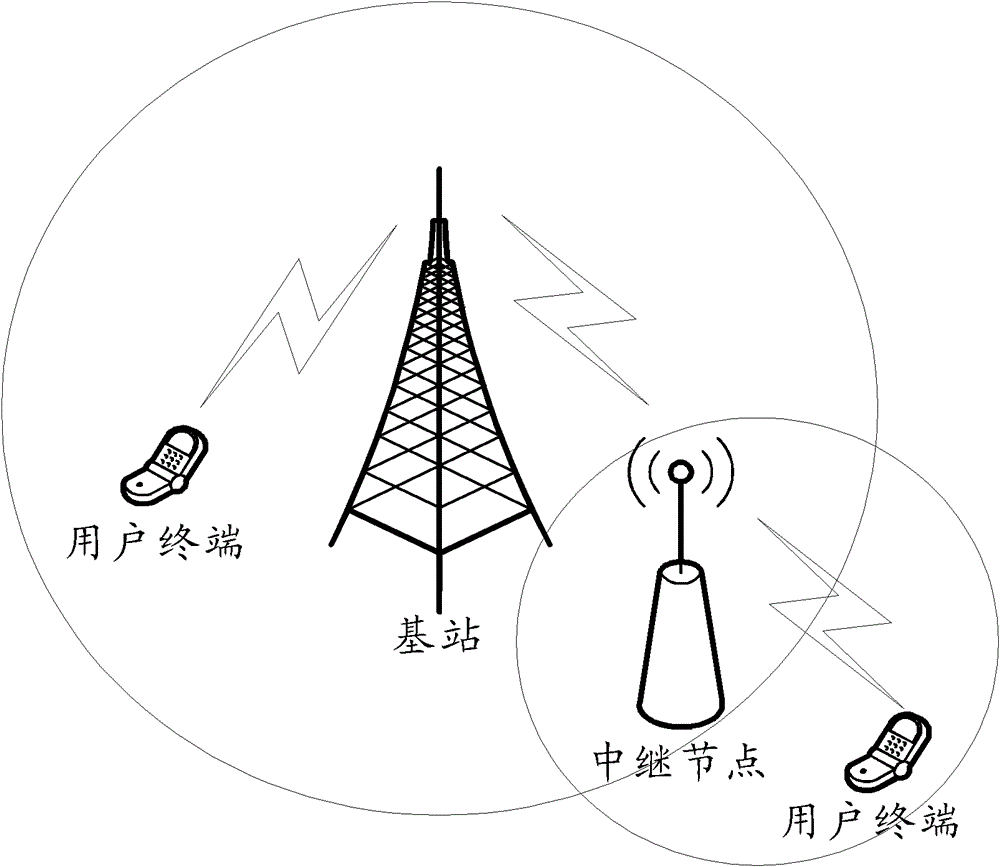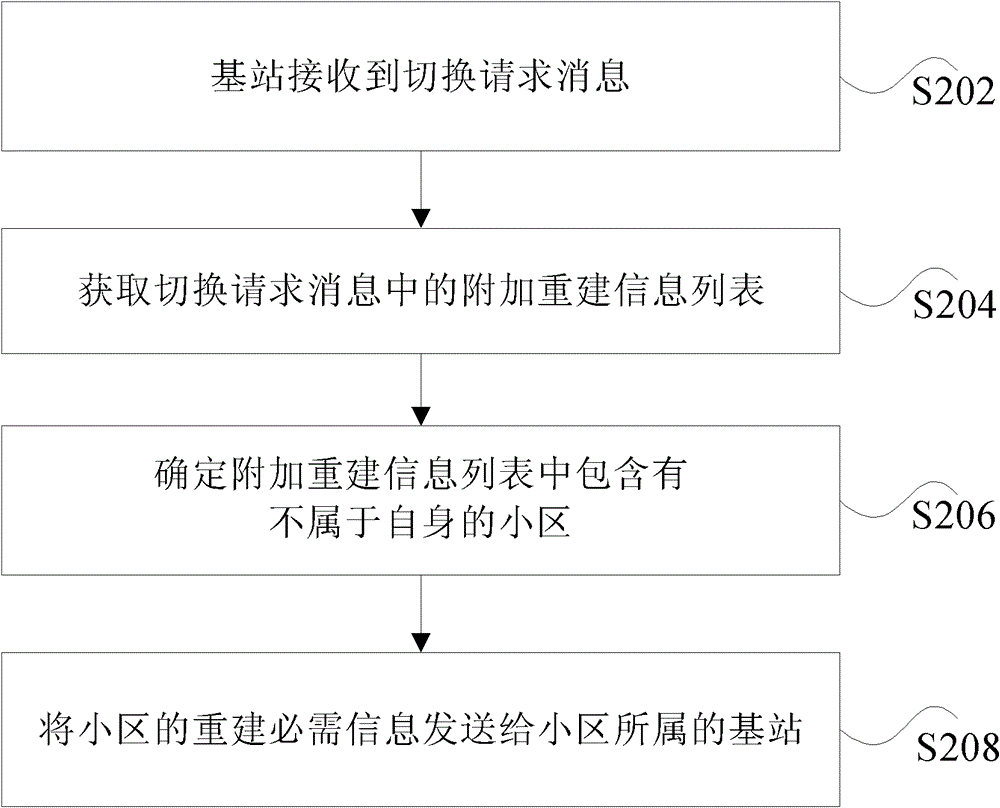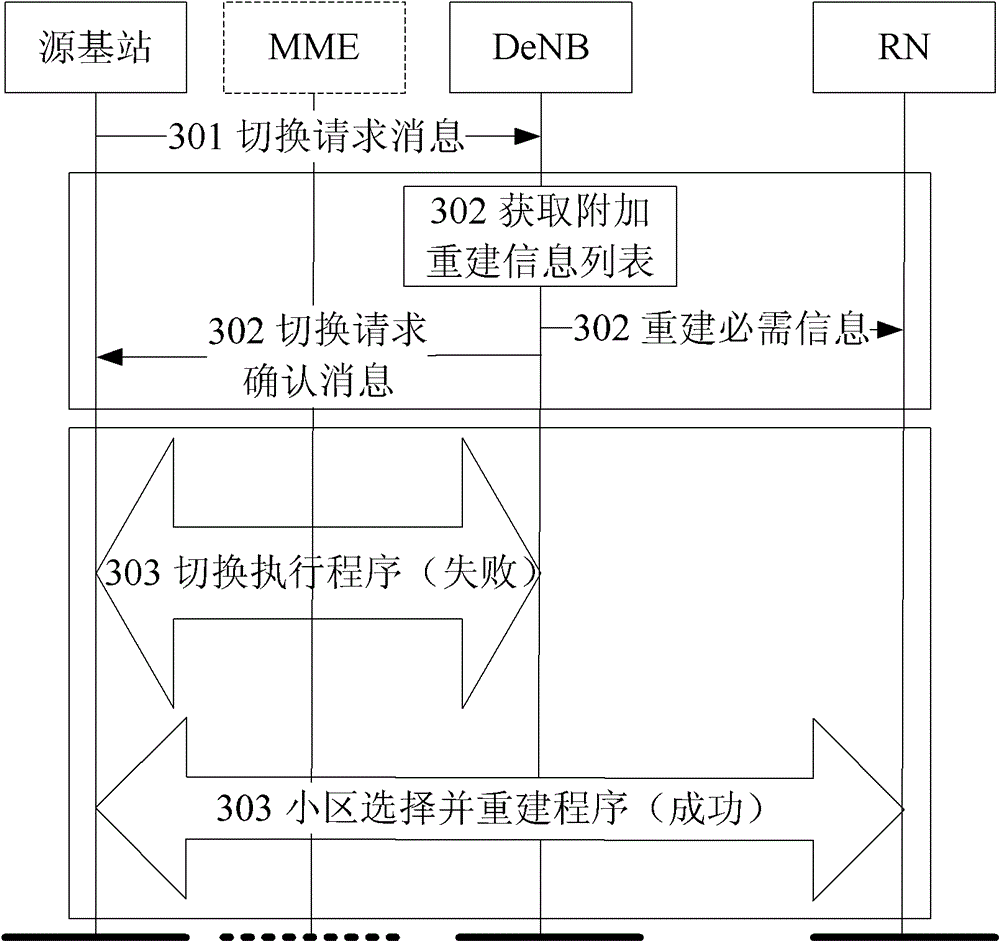Processing method and device for cell handover
A cell handover and processing method technology, applied in the field of communication, can solve the problems that the base station does not have the necessary information for cell reconstruction and the reconstruction fails, and achieves the effects of improving the reconstruction success rate, good mobility performance, and ensuring mobility performance.
- Summary
- Abstract
- Description
- Claims
- Application Information
AI Technical Summary
Problems solved by technology
Method used
Image
Examples
Embodiment 1
[0051] When handover is performed in a network where RN is deployed, the source base station (referring to a common eNB or RN) selects a target cell and one or more potential reestablishment cells based on the UE's measurement report. Because the eNB IDs of the RN and the DeNB are the same, no matter whether the target cell is actually a DeNB cell or an RN cell, in the view of the source base station, the selected cells belong to the target DeNB. The source base station includes the information of these cells in the handover request message and sends it to the target DeNB. When the target cell is the DeNB cell, the DeNB receives the handover request message and learns the additional re-establishment information list from it. If there are RN cells (RNs under the target DeNB), the DeNB forwards the re-establishment necessary information related to these RN cells to the respective cells. The corresponding RN (if there is a cell belonging to the DeNB in the additional re-establi...
Embodiment 2
[0060] When handover is performed in a network where RN is deployed, the source base station (referring to a common eNB or RN) selects a target cell and one or more potential reestablishment cells based on the UE's measurement report. Because the eNB IDs of the RN and the DeNB are the same, no matter whether the target cell is actually a DeNB cell or an RN cell, in the view of the source base station, the selected cells belong to the target DeNB. The source base station includes the information of these cells in the handover request message and sends it to the target DeNB. When the target cell is the DeNB cell, the DeNB receives the handover request message and learns the additional re-establishment information list from it. If there are RN cells (RNs under the target DeNB), the DeNB forwards the re-establishment necessary information related to these RN cells to the respective cells. The corresponding RN (if there is a cell belonging to the DeNB in the additional re-establi...
Embodiment 3
[0068] When handover is performed in a network where RN is deployed, the source base station (referring to a common eNB or RN) selects a target cell and one or more potential reestablishment cells based on the UE's measurement report. Because the eNB IDs of the RN and the DeNB are the same, no matter whether the target cell is actually a DeNB cell or an RN cell, in the view of the source base station, the selected cells belong to the DeNB. That is to say, even if the target cell is an RN cell, the source base station will only consider the cell as a DeNB, that is, still include the information of these cells in the handover request message and send it to the target DeNB.
[0069] In this case, after receiving the handover request message, the DeNB can obtain the list of target cells and additional re-establishment information, and forward the handover request message and information necessary for re-establishment to the RN corresponding to the cell according to the information ...
PUM
 Login to View More
Login to View More Abstract
Description
Claims
Application Information
 Login to View More
Login to View More - R&D
- Intellectual Property
- Life Sciences
- Materials
- Tech Scout
- Unparalleled Data Quality
- Higher Quality Content
- 60% Fewer Hallucinations
Browse by: Latest US Patents, China's latest patents, Technical Efficacy Thesaurus, Application Domain, Technology Topic, Popular Technical Reports.
© 2025 PatSnap. All rights reserved.Legal|Privacy policy|Modern Slavery Act Transparency Statement|Sitemap|About US| Contact US: help@patsnap.com



